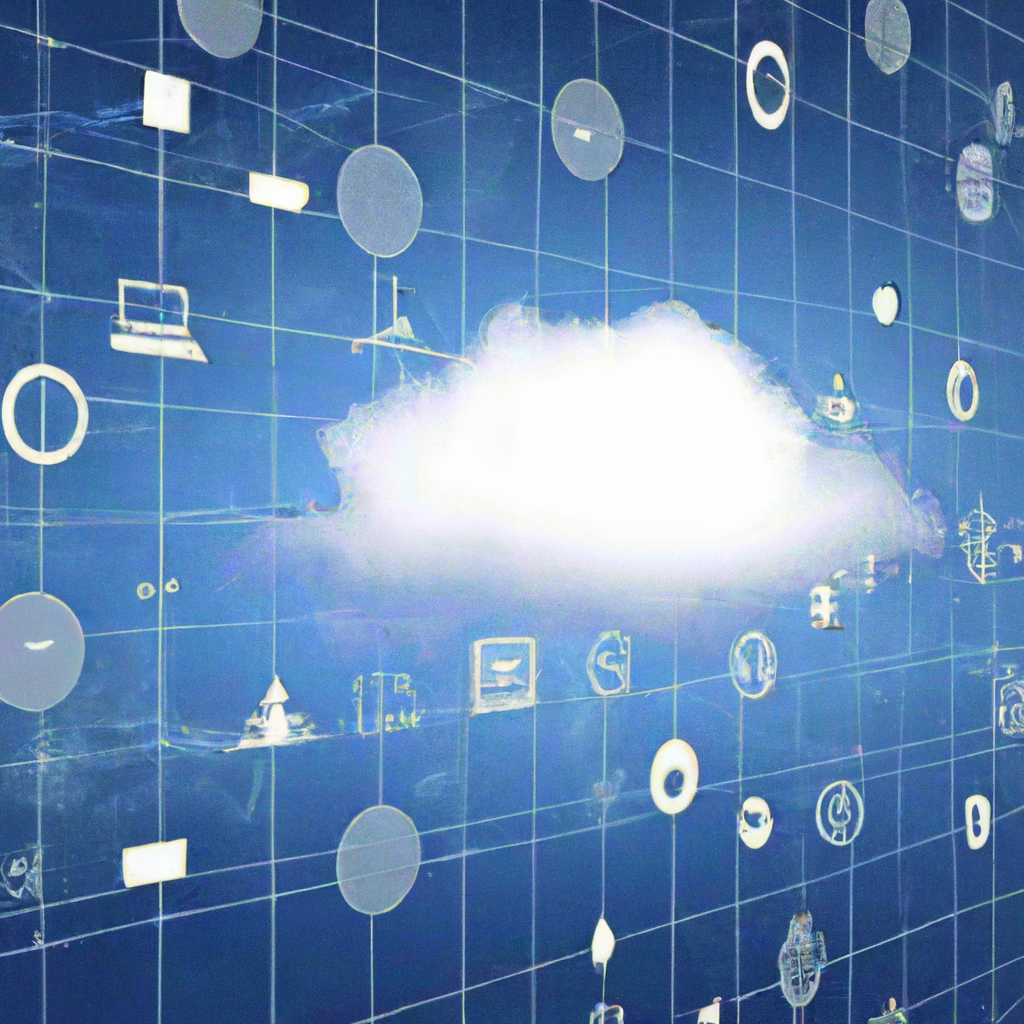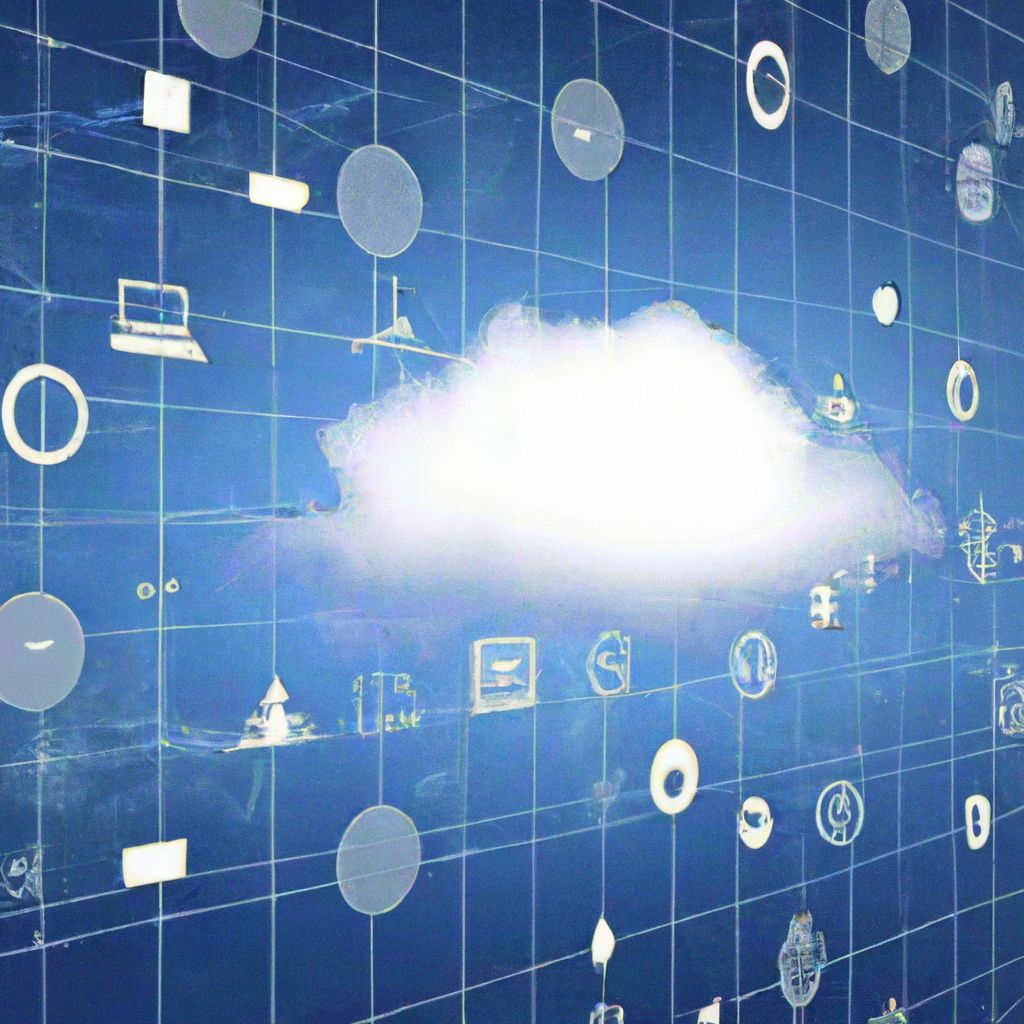So, you’ve probably heard the term SaaS thrown around a lot lately, but who exactly are the main users of this trendy technology? Well, in a nutshell, SaaS, or Software as a Service, is a cloud computing model that allows users to access software applications over the internet, rather than having to install and maintain it on their own computers. It’s a shift in the way we consume software, and it’s no surprise that businesses big and small have quickly jumped on board. From start-ups looking for cost-effective solutions to large enterprises seeking scalability and flexibility, the main users of SaaS span across industries and encompass a wide range of needs and priorities.
What is SaaS?
Definition
SaaS, or Software as a Service, is a cloud-based software delivery model in which the software is provided to users over the internet. Instead of purchasing and installing software on their own computers or servers, users can access the software and its features through a web browser or mobile application. The software is hosted and maintained by the SaaS provider, who is responsible for ensuring its availability, security, and updates.
Characteristics
There are several key characteristics of SaaS that distinguish it from traditional software models. Firstly, SaaS is subscription-based, which means users pay a recurring fee to access the software rather than making a one-time purchase. This makes it more affordable and budget-friendly, especially for individuals and small businesses. Secondly, SaaS is typically accessed through a web browser or mobile app, making it accessible from any device with an internet connection. This flexibility allows users to work remotely and collaborate with others seamlessly. Finally, SaaS providers are responsible for maintaining and updating the software, which eliminates the need for users to manually install updates or deal with technical issues.
Types of SaaS Users
Individual Users
Individual users form a significant portion of SaaS users. This includes freelancers, students, and people who use SaaS for personal purposes. Freelancers often rely on SaaS tools for project management, time tracking, and invoicing, as it helps streamline their workflow and improve productivity. Students can benefit from SaaS applications for note-taking, collaboration, and project management, making it easier to stay organized and efficient. For personal use, individuals might utilize SaaS for tasks such as file storage, photo editing, or personal finance management.
Small Businesses
Small businesses are another prominent group of SaaS users. Start-ups, microbusinesses, and consultants often rely on SaaS tools to operate efficiently without the need for a dedicated IT infrastructure. SaaS solutions provide these businesses with access to enterprise-grade software without the hefty upfront costs. Start-ups can leverage SaaS applications for team collaboration, customer relationship management, and accounting. Microbusinesses find value in SaaS tools for improving their online presence, managing inventory, and providing customer support. Consultants benefit from SaaS for project management, document sharing, and communication with clients.
Medium-sized Businesses
Medium-sized businesses, which are growing companies that have surpassed their initial start-up phase, use SaaS to support various departments within their organization. These businesses have more specific requirements and often seek specialized SaaS solutions to meet their needs. Marketing departments can leverage SaaS tools for social media management, email marketing, and analytics. Human resources departments benefit from SaaS solutions for recruitment, employee onboarding, and performance management. Sales teams can utilize SaaS applications for customer relationship management, lead generation, and sales forecasting.
Large Enterprises
Large enterprises, including multi-national corporations and industry leaders, also make use of SaaS solutions. These organizations often have complex IT infrastructures and numerous departments with specific software needs. SaaS allows them to streamline their operations, reduce costs, and improve efficiency. Multi-national corporations can benefit from SaaS tools that provide centralized control and visibility across different locations and departments. Industry leaders can incorporate SaaS solutions to stay ahead of the competition, drive innovation, and scale their operations without heavy investments in infrastructure.

Benefits of SaaS for Users
Cost-effective
One of the primary benefits of SaaS for users is its cost-effectiveness. Instead of purchasing expensive software licenses upfront, users can access SaaS applications through affordable subscription plans. This allows individuals and businesses to allocate their financial resources more efficiently, as they only pay for the software they actually use. Additionally, SaaS eliminates the need for costly hardware and infrastructure investments, as the software is hosted and maintained by the provider.
Scalability
Another advantage of SaaS is its scalability. Users can easily scale up or down their software usage based on their needs. This is especially beneficial for businesses that experience fluctuating demands. SaaS providers typically offer different pricing plans and options to accommodate various user requirements. Users can add or remove users, upgrade or downgrade plans, and access additional features as their needs evolve. This scalability allows businesses to be flexible and adapt to changing circumstances without facing unnecessary expenses.
Flexibility
SaaS offers users unparalleled flexibility in terms of accessing software from anywhere, at any time, and on any device. As long as users have an internet connection, they can access their SaaS applications through web browsers or mobile apps. This flexibility enables remote work, collaboration, and productivity on the go. Users can access their data and work on projects from different locations and devices seamlessly, enhancing efficiency and convenience.
Ease of Use
SaaS applications are designed with user-friendliness in mind, making them easy to learn and use. The interfaces are intuitive, and the software is typically accompanied by extensive documentation, tutorials, and customer support. This ease of use eliminates the need for extensive training or technical knowledge, allowing users to quickly adopt and start using the software. It also reduces the learning curve and ensures that users can fully leverage the software’s capabilities from the get-go.
Automatic Updates
With SaaS, users no longer need to worry about installing updates and patches manually. SaaS providers are responsible for maintaining and updating their software to ensure it is secure, up to date, and equipped with the latest features. Users automatically receive these updates without any additional effort or cost. This ensures that users always have access to the newest version of the software, eliminating potential security vulnerabilities and ensuring the best user experience.
Challenges of SaaS for Users
Data Security
Data security is a significant concern for SaaS users. Since the software and user data are stored in the cloud, users must trust the SaaS provider to keep their data secure and protected from unauthorized access. If the SaaS provider experiences a data breach or security incident, it can have severe consequences for users, including the compromise of sensitive information. It is essential for users to thoroughly research and choose reputable SaaS providers with robust security measures, data encryption, and strict access controls.
Dependency on Internet Connection
One of the limitations of SaaS is its dependency on a stable internet connection. Without a reliable internet connection, users may experience interruptions in accessing their SaaS applications or encounter delays in data synchronization. This can be particularly problematic for individuals or businesses that operate in remote areas with limited internet connectivity. Users should consider the availability and reliability of their internet connection before heavily relying on SaaS solutions for critical tasks.
Vendor Lock-in
Vendor lock-in is a potential challenge for SaaS users. When users adopt a specific SaaS solution, they become dependent on the provider for ongoing access to the software and their data. Switching to a different SaaS provider can be complex and time-consuming, as it may involve transferring and reconfiguring data, training users on a new platform, and adjusting existing workflows. Users should carefully evaluate the terms and conditions of their SaaS contracts to understand any potential limitations or restrictions on data portability.
Limited Customization
While SaaS offers flexibility and convenience, it may have limitations in terms of customization. SaaS applications are designed to serve a broad range of users, and as a result, they may lack certain specific features or functionalities required by individual users or businesses. While some degree of customization may be possible through configuration options or integrations with other software, users may not have full control over the software’s underlying architecture or code. Users should assess their requirements and ensure that the available customization options align with their needs before adopting a SaaS solution.

Individual Users
Freelancers
Freelancers can greatly benefit from SaaS applications tailored to their specific needs. Project management tools like Trello or Asana can help freelancers stay organized, track tasks, and collaborate with clients. Time-tracking and invoicing tools like Harvest or FreshBooks can simplify the process of tracking billable hours and managing finances. Designers and photographers can leverage cloud-based editing software like Adobe Creative Cloud to access their projects from anywhere and collaborate with clients in real-time.
Students
Students can make their academic lives more efficient and productive with the help of various SaaS applications. Note-taking tools like Evernote or OneNote allow students to capture and organize their class materials, lecture notes, and research in one place. Collaboration platforms like Google Drive or Microsoft Office 365 enable students to collaborate on group projects, share documents, and edit them in real-time. Task management tools like Todoist or Trello can help students stay organized, manage deadlines, and track progress on assignments.
Personal Use
SaaS applications can also be valuable for personal use. Cloud storage services like Dropbox or Google Drive provide individuals with a convenient and secure way to store and access their files, photos, and videos from any device. Personal finance management tools like Mint or Personal Capital assist individuals in tracking their expenses, creating budgets, and managing their financial goals. Streaming services like Netflix or Spotify deliver entertainment and media content on-demand, allowing individuals to enjoy their favorite movies, TV shows, or music without the need for physical media.
Small Businesses
Start-ups
Start-ups often have limited resources and budgets, making SaaS solutions an attractive option for their software needs. Customer relationship management (CRM) tools like Salesforce or HubSpot can help start-ups manage their sales pipelines, track customer interactions, and nurture leads. Collaboration platforms like Slack or Microsoft Teams facilitate communication and collaboration within start-up teams, regardless of their geographical locations. Accounting software like QuickBooks or Xero streamlines financial record keeping, invoicing, and expense tracking for start-ups.
Microbusinesses
Microbusinesses, which are small operations typically run by one or a few individuals, can benefit from SaaS tools that increase their efficiency and professionalism. Website builders like Wix or Squarespace enable microbusinesses to create and maintain professional-looking websites without the need for coding skills. Social media management tools like Hootsuite or Buffer help microbusinesses schedule and publish content across multiple social media platforms, engaging with their target audience effectively. Customer support platforms like Zendesk or Freshdesk equip microbusinesses with the ability to manage customer queries, feedback, and support tickets efficiently.
Consultants
Consultants, who often work independently or in small teams, rely on SaaS tools to manage their projects, collaborate with clients, and deliver high-quality services. Project management tools like Basecamp or Monday.com allow consultants to plan and track their projects, manage deadlines, and communicate with clients and team members. Collaboration tools like Google Workspace or Microsoft Office 365 offer consultants a suite of applications for sharing documents, editing files in real-time, and conducting virtual meetings. Proposal and contract management tools like Bidsketch or PandaDoc assist consultants in creating, sending, and tracking professional proposals and contracts.
Medium-sized Businesses
Growing Companies
Medium-sized businesses that have surpassed their start-up phase often require more advanced software solutions to support their growing operations. Inventory management tools like TradeGecko or Zoho Inventory provide businesses with the ability to track and manage their inventory levels, streamline order fulfillment, and optimize supply chain processes. Customer support platforms like Zendesk or Freshdesk assist medium-sized businesses in efficiently managing customer queries, ensuring timely resolution, and maintaining customer satisfaction. Human resources software like BambooHR or Workday automates and centralizes various HR processes, including recruitment, onboarding, performance management, and employee self-service.
Departments within Large Organizations
Medium-sized businesses, which may have multiple departments with specific software needs, can benefit from specialized SaaS solutions tailored to their requirements. Marketing departments often rely on marketing automation tools like Marketo or Mailchimp to streamline their campaigns, nurture leads, and track marketing performance. Sales departments utilize customer relationship management (CRM) software like Salesforce or Microsoft Dynamics to manage their sales pipelines, track customer interactions, and analyze sales trends. Finance departments leverage accounting software like QuickBooks or Xero to automate financial processes, generate financial reports, and ensure compliance with accounting standards.
Large Enterprises
Multi-national Corporations
Multi-national corporations often have complex IT infrastructures and require specialized SaaS solutions to support their diverse operations across different locations. Enterprise resource planning (ERP) systems like Oracle or SAP offer comprehensive and integrated software solutions for managing various business functions, including finance, supply chain, and human resources. Business intelligence tools like Tableau or Power BI help corporations analyze and visualize their data, gaining valuable insights into their operations and making data-driven decisions. Customer experience management platforms like Adobe Experience Cloud or Salesforce Marketing Cloud enable corporations to deliver personalized and engaging experiences to their customers across different channels and touchpoints.
Industry Leaders
Industry leaders in different sectors, such as technology, finance, or healthcare, leverage SaaS solutions to gain a competitive edge and drive innovation. Technology companies can utilize cloud platforms like Amazon Web Services or Microsoft Azure to deploy and manage their applications, scale their infrastructure, and leverage advanced analytics and artificial intelligence capabilities. Financial institutions rely on regulatory compliance software like Thomson Reuters or NICE Actimize to ensure adherence to complex regulations, detect fraudulent activities, and mitigate operational risks. Healthcare organizations adopt electronic medical record (EMR) systems like Epic or Cerner to manage patient records, streamline healthcare workflows, and improve patient care quality.
Conclusion
SaaS, or Software as a Service, offers a wide range of benefits to users, from individuals to small businesses and large enterprises. Its cost-effectiveness, scalability, flexibility, ease of use, and automatic updates make it an attractive choice for users looking for affordable and accessible software solutions. However, users should also consider the challenges of data security, dependency on internet connection, vendor lock-in, and limited customization when adopting SaaS. Tailored to the needs of different user groups, including freelancers, students, small businesses, medium-sized businesses, and large enterprises, SaaS applications provide a variety of tools and functionalities to enhance productivity, collaboration, and efficiency. By understanding the advantages and limitations of SaaS, users can make informed decisions and leverage these cloud-based solutions to meet their specific requirements and drive success in their personal and professional endeavors.
